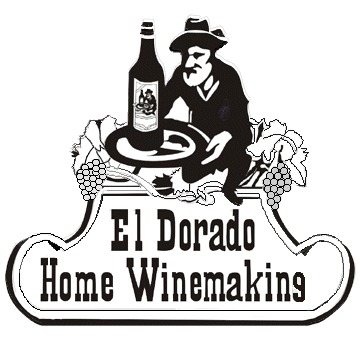Apple Full Body Wine (5 Gallons)
| 70 | Lbs. | Apples or 5 Gal. Juice |
| 5 | Lbs. | Sugar |
| 7½ | Tsp. | Acid Blend |
| 2½ | Tsp. | Pectic Enzyme |
| 1¼ | Tsp. | Tannin |
| 5 | Tsp. | Nutrient |
| 5 | Campden, crushed | |
| 1 | Vial | Champagne Yeast (White Labs WLP715) |
| 5 | Tsp. | Anti-oxidant (Later) |
Starting S.G. 1.085-90
METHOD:
Only apples that are sound (firm, ripe) and free of rot and worm damage should be used. Wash and sort out apples. Since a better wine is produced by fermenting on the juice (without pulp) it is recommended that the juice be pressed from the apples. You'll find that cutting the apples in smaller pieces helps extract more juice. If you are starting with juice purchased from the store (make sure no preservatives were added) the above work is already done. In EITHER case,
1. Put the juice into the primary fermentor; immediately add the crushed Campden tablets and Pectic Enzyme to prevent browning and aid clearing. Stir in all other ingredients except Yeast. Cover Primary.
2. After 24 hours, add yeast. Cover Primary.
3. Stir daily, check Specific gravity. When ferment reaches S.G. of 1.040 (3-5 days) siphon wine off sediment into glass jug secondary. Attach airlock.
4. When ferment is complete (S.G. has reached 1.000-- after 3 weeks) siphon off sediment into clean secondary. Reattach airlock.
5. Siphon off sediment again in 2 months and again if necessary until wine is clear before bottling. Add anti-oxidant at bottling.
NOTE:
For a small quantity of wine, if a press is not available to do the job, a nylon straining bag can be used.
To use: A. Place cut-up apples in bag. Press and strain out juice into primary fermentor. Immediately add Campden tablets (crushed) into juice.
B. Keep all pulp in straining bag, tie top and place in primary.
C. Stir in all other ingredients except yeast. Cover primary.
D. After 24 hours strain juice from pulp. Discard pulp and proceed with step 2.
VARIETIES TO USE AND PLANT:
In apple wine or apple cider the more flavorful and acid varieties such as Winesap, McIntosh and Jonathans are the best. Delicious apples because of their low acidity should be combined with the more acid varieties. The idea is a combination of the above varieties. All are available under their common name from nurseries, many in dwarf form.

